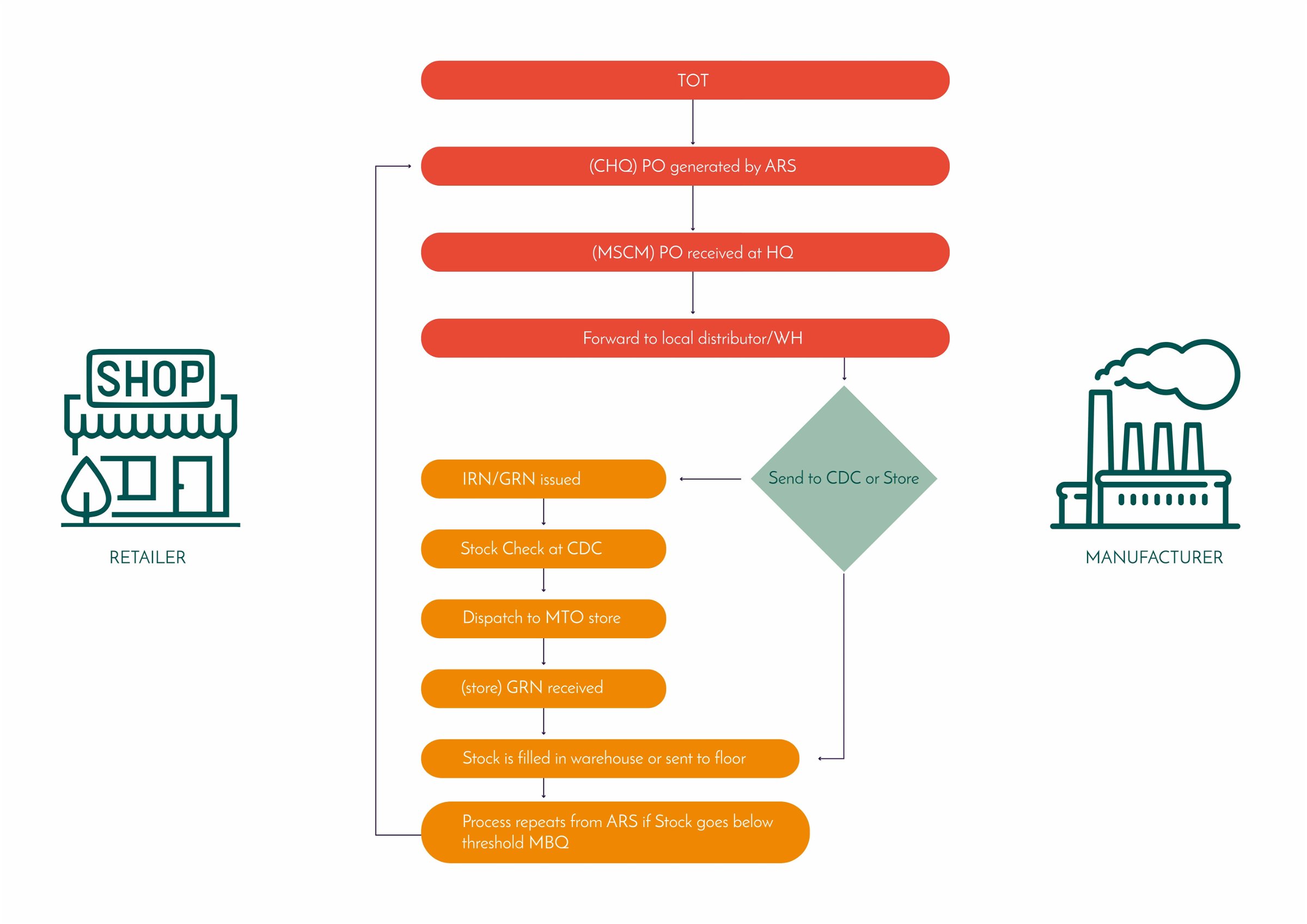Modern Trade has been seeing tremendous growth over the years, especially for FMCGs. With a tremendous and steady shift from general trade to modern trade, the companies are focusing on generating more revenue from the Modern Trade Outlets(MTO). Going further, you will be able to understand the concept of modern trade and how automating your sales force can be a beneficial option to reap the maximum benefits.
According to an article that was published in Financial Express, from the third quarter in 2016 to the third quarter of 2018, traditional trade grew at only 2 per cent while modern trade at a whopping 23 per cent. The growth in modern trade has been classified as 18 per cent from metros, 32 per cent from 5-10 lakh towns, 33 per cent from 1-5 lakh towns and 58 from less than 1 lakh towns.
Modern retail is seeing retailers launch new stores and expanding. For instance, in 2017-18, Avenue Supermarts Ltd, which runs the DMart chain of stores, added 24 stores, taking its total count to 155.
As we realize there has been a significant growth rate in Modern Trade as compared to the general trade, we also should be able to differentiate them both from each other.
Here are some of the key differences between General Trade and Modern trade-
General Trade Vs Modern Trade
Ownership
- General Trade
- Store is owned by an individual, with limited space capacity.
- Modern Trade
- Store is owned/franchised by a multinational/privately held company with standard set of processes controlled centrally & comes with a large space availability for brand visibility.
Terms of Trade (TOT)
- General Trade
- Margin structure of each product is decided by the company policy or by the distributor of the product. There could be trade promotions offered by sales representative to increase purchase.
- Modern Trade
- The production company and the retail chain purchase division enters into an annual trade agreement includes minimum purchase quantity, volume purchase discounts, % of shelf space in the category, and activities to be carried out by the production company as a part of merchandising activity.
Supply Chain
- General Trade
- The salesman goes to the shop on a regular basis, takes the order and the distributor supplies the same on the same day or the same week.
- Modern Trade
- Order generated at the HQ purchase manager and directly sends to the sale/ division head, the company mostly decides to supply from its own central/regional warehouses.
Brand Visibility
- General Trade
- The salesman goes to the shop on a regular basis, takes the order and the distributor supplies the same on the same day or the same week.
- Modern Trade
- Order generated at the HQ purchase manager and directly sends to the sale/ division head, the company mostly decides to supply from its own central/regional warehouses.
How MTO Operations Works?
- Terms of trade agreement between manufacturing company and retailer will include product name, minimum stock quantity, margins, customer schemes, schemes and discounts, off-take activities.
- Place the purchase order sent from retail HQ to manufacturer HQ mentioning the outlet location or centralized retail warehouse.
- Supplier MTO manager receives the PO will forward the PO to company owned warehouse or to the distributor.
- Distributor will supply the products and will create an invoice.
- Now retailer will acknowledge the goods received with GRN (Goods received note).
- Company merchandiser showcase the product to increase the off-take.
- If the available stock goes below the threshold MBQ, the purchase manager release the PO.

Why building brand awareness activity is a must to increase off-take from the shelf?
Given the increase in competitors for any of the FMCG products and a shift from traditional trade to modern trade, it becomes pertinent for the FMCG companies to stay ahead in the competition by establishing their presence in Modern Trade Outlets.
Now the question arises, as to how to ensure merchandising solution –
-
Steps to ensure Merchandising solution
- Attendance check as per journey plan: You should be able to check the attendance of your sales team and verify if it is as per journey plan.
- Delivery check option as per last Purchase Order (PO) or Indent: Since the MTOs eliminate the need for a distributor, you should also be able to check if the delivery to the MTOs has been made in accordance with Purchase Order has been.
- Check Primary Axis Point: Checking primary axis point include measuring the number of SKUs, the share of facing, the share of shelf, level of facing for both self and competitors’ products, the freshness of relevant products and parameters against Minimum Basic Quantity.
- Check Secondary Axis Point: Checking Secondary Axis Points include checking for FSU, PSU, Gondolas, Bins, End Caps, Parasites etc which might have any impact on the tertiary sales.
- Check Tertiary Axis Point: Tertiary axis points include the check of backroom stock. When there is a requirement of stock, the sales representative should be able to immediately meet the requirement.
-
Generate Reports and analyse
- The above process should be available in the form of reports which can help the FMCG companies to analyze and help meet the supply and demand.
How Sales Force Automation Can Help Achieve the Above Process?
- Creates Brand visibility- In case of MTOs, the merchandiser replaces salesman, and thereby he will be able to visualize the sales conditions of his products and competitors’ products. Automation helps the merchandiser stay in line with the competition and avail real-time updates and so can stay in par with the competition and increase his brand visibility.
- Increases Tertiary Sales- In the case of MTOs, the brand/company appoints their salesman in the super/hypermarket who can get an overview of the products. The appointed salesman will be able to provide concrete data and update in the automation app. This helps the sales team to be proactive in case of all the outlets and increase the tertiary sales.
- Helps in Stock Checking- Real-time updates on stock helps the company is not missing out on any stocks and have control over the inventory across the Modern Trade Outlets.
- Stay in line with Planogram- Automation helps the sales team achieve the target, more accurately and efficiently by reducing the unproductive hours on reporting and by giving reminders to submit letters one month in advance.
- Capture Product Expiry Date on Shelf- SalesDiary lets you do the ageing analysis of your products on the shelves in different modern retail outlets from one single place.
- Define Promotion Calendar for the year- With SalesDiary, you can have a track of schemes and offers to be given to various outlets. It is easier to define the promotional calendar, product-wise or outlet-wise along with estimated take-off.
- Monitor Sales- SalesDiary lets you monitor sales achieved and compare it against your investment amount for shelf rentals helping you make better decisions on selecting the shelves for your products.
- Capture Competitor – SalesDiary provides you an option to benchmark your and your competitors’ activities in each outlet and thereby helps you to stay ahead in the competition.
From the above, it is clear that Sales Force Automation helps you to remain in line with the industry and in fact, can give you an edge as against your competitors.
SalesDiary can help keep track of the supplies to Modern Trade Outlets through its advanced features.
- Route Management: You can Optimize routes based on your priority outlets and business goals.
- Check-in and Check-out: SalesDiary provides you with Geo-tagged and time-stamped records to analyse BTL activities and the impact.
- Automated Order Generation: With SalesDiary, reduce time on taking orders with system suggested orders and share with the Purchase teams.
- Dispatch and Delivery Confirmation: You can track and verify past orders with real-time updates from the depot generated by the system.
- Tertiary Sales: You can even enable your Modern Retail Merchandisers to record sales and consumer feedback.
- Consumer Surveys and competition analysis: SalesDiary lets you stay abreast about market trends and new products in your category.
- Customer Issues: You can easily record issues regarding claims, returns, damages or product feedback through the app.
- Team Performance: With SalesDiary you can analyse team activities and derive the best practices for your Modern Retail outlets.
SalesDiary is easier to implement and simpler to use. Book a demo with us now.




